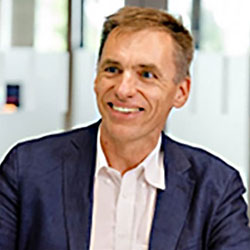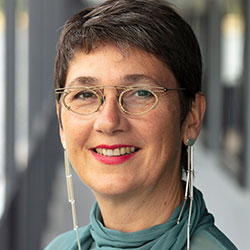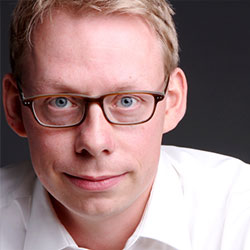Discover the Potential of Low-Head Pumped Hydro Energy Storage: Exploring the Future of Renewable Energy Storage in the Seas
Introduction
The ALPHEUS project has been running for 21 months, and its multidisciplinary research team has made progress in the use of low-head pumped hydro energy storage (LH PHES) plants for storing large-scale electricity in the North Sea. Areas of research have included:
- Variable low-head pump-turbine designs
- Power take off (PTO) powertrain architecture
- Civil structure design
- Grid integration
- Sustainable implementation of the LH PHES plants
Implementation of large civil structures can face opposition from the public, which in turn, can lead to delays, budget overruns and/or mistrust towards later projects. To address this, ALPHEUS conducted a stakeholder analysis to understand the public’s concerns regarding LH PHES technology. A questionnaire was already distributed and completed to allow stakeholders to provide their views on the technology.
The ALPHEUS project is organizing its first online forum to incorporate stakeholder opinions further, this time focusing on more technical aspects of the innovative LH PHES technology. Participants will be able to view a demonstration of the current research advances and a video showcasing the physical facilities used for model validation. After the demonstration, a panel discussion will take place, followed by an interactive session where the audience can provide feedback and suggestions that could shape research on the LH PHES and discover potential business cases.
Work Packages and Topic Description
WP2 – Reversible Pump-Turbine and Test Setup Design
The objectives are the application of laboratory and numerical methods to develop propeller type and positive displacement runners and casings that operate efficiently in both pump and turbine modes, allow for rapid mode switching (pump/turbine modes) with low fatigue loading, and result in minimal fish mortality.
WP3 – Power Take-Off Design
A power take-off (PTO) powertrain architecture with multidimensional machine-side control will be developed to maximize efficiency and minimize the mode switching time of the turbine.
WP4 – Power Take-Off and Reversible Pump-Turbine Integration
The aim of this work package is to provide measurement results from laboratory experiments of the complete model scale machine set (turbine and PTO). The measurement results will be used for validation of the machine performance/mode switching models (WP2 and WP3), validation of structural models (WP5), and assessment of fish behaviour.
WP5 – Civil Engineering Design
For the site identification of potential low-head pumped storages along the coasts of the North and Baltic Seas different objectives are included in the work page.
WP6 – Grid Integration
The first objective of WP6 is to design the grid-side control and to equip it with functions for EU standard-compliant operation. Based on this, a simulation model can be developed which can be used for grid studies.
The second objective of WP6 is to test the capacity of the storage power plant for various flexibility options for the grid. In addition to the technical possibilities, economic evaluations are also carried out.
Online workshop on low-head pumped hydro storage technology
Goals
- Disseminate ALPHEUS advances
- Focus on stakeholder engagement
- Techno-economic feasibility of the project
Challenges of low-head PHS development (civil works, turbine, grid integration, policy…)
- Scalability of the technology
Is upscaling possible with available manufacturing technology?
- Needs for research and innovation
- Stakeholders have the opportunity to highlight research topics in the field of LH PHS
Panel Participants
 |
Stuart Reigeluth is the founder of REVOLVE (2010) – a communication group fostering cultures of sustainability. He is a co-initiator of the AMWAJ Alliance for valuing water ecosystems around the Mediterranean, and he is a co-founder of the global Cities4Forests network. He has an MBA from Solvay-Ponts (2015) and a MA from CAMES at the American University of Beirut (2005). |
| Jeremy Bricker is an Associate Professor of Civil/Hydraulic Engineering at the Delft University of Technology and at the University of Michigan and a licensed Professional Engineer in California and Washington. His experience encompasses design and failure analysis of coastal and hydraulic structures subject to tsunamis, hurricanes, and floods. As the scientific coordinator of ALPHEUS, he works to tie together the multiple disciplines involved in the project. |  |
 |
Bettina Geisseler is a lawyer and founder of GEISSELER LAW, a law firm specialised in contract law regarding the construction and erection of major infrastructure projects, such as (hydro and other ) power plants, dams or tunnels worldwide. She is a member of the Scientific Committee of the Société Hydrotechnique de France (SHF) and a member of the ITA (International Tunnelling and Underground Space Association) Working Group on an Underground Infrastructure Sustainability Indexing tool. |
| Peter Hoffmann has worked in various positions for more than 30 years in the energy business. Currently, he is the Director for Energy System Planning at TenneT, one of the leading TSOs in Europe. His long-lasting experience is particularly in System Operations, the customer of ancillary services offered by a hydraulic plant as developed by the ALPHEUS project. Furthermore, he is involved in the development of the NorthSeaWindPowerHub, analysing artificial islands as the basis for sector coupling purposes offshore. |  |
 |
Ann Overmeire is the COO of Blue Cluster, a Belgium-based cluster focused on a sustainable blue economy with over 180 industry members and 17 publicly funded partners. Blue Cluster is recognised as a spearhead cluster by the Flemish government and has a dedicated budget for innovation projects. Ann engages with the members and stakeholders and is responsible for the networking agenda as well as the international projects. She assists the CEO in the daily management of the cluster organisation. |
| Nils Goseberg, a Professor of Hydromechanics, Coastal and Ocean Engineering at Technische Universität Braunschweig, Germany, as well as a director of the Coastal Research Center, Hannover. Nils is a principal investigator in the EU-funded research and innovation action “Alpheus”. |  |
Summary
The ALPHEUS project organized an online workshop on low-head pumped hydro storage technology to share their scientific progress and gather technical feedback with stakeholders.
An impartial moderator led the workshop and began with a 10-minute introduction about the ALPHEUS work on low-head PHS. This was followed by a 20-minute panel discussion with experts from the external advisory board and the ALPHEUS scientific coordinator. The panel discussed the ground-breaking nature of the ALPHEUS technology, its economic aspects, its integration into the electric grid and the legal and acceptance issues that such a technology may face. Finally, a 30-minute Q&A was held with the audience.
The primary outcomes from the panel discussion and Q&A are summarized below:
Participants’ past experience showed the importance of public acceptance for the development and implementation of energy generation technologies.
Current high energy prices are an opportunity for energy storage technologies to be implemented.
Structures such as dunes or dikes of a low-head PHS installed in the North Sea could be attractive for multifunctional uses. Fields that could be explored are aquaculture and recreational activities.
Offshore wind electricity has production peaks where the energy generation is curtailed. This is only expected to grow in the future, and the low-head PHS technology could be an excellent fit for weekly storage in the North Sea.
The ALPHEUS project plans to maintain communication and collaboration with stakeholders throughout the project’s timeline. An open survey to collect expert knowledge on energy policy is available. Additionally, at the end of the project, there will be a stakeholder event to share the results and outcomes of the research.
The complete video recording of the event can be accessed here or viewed below.

